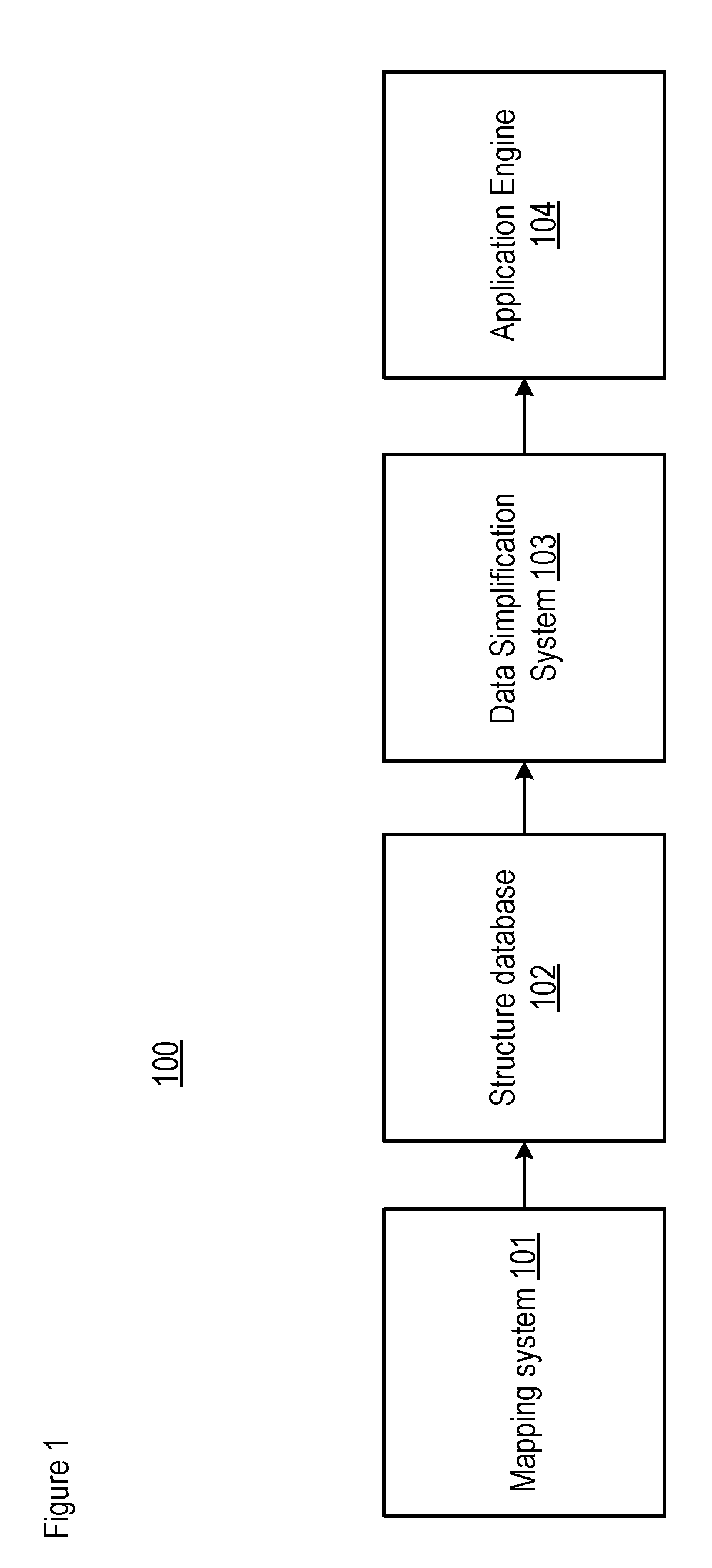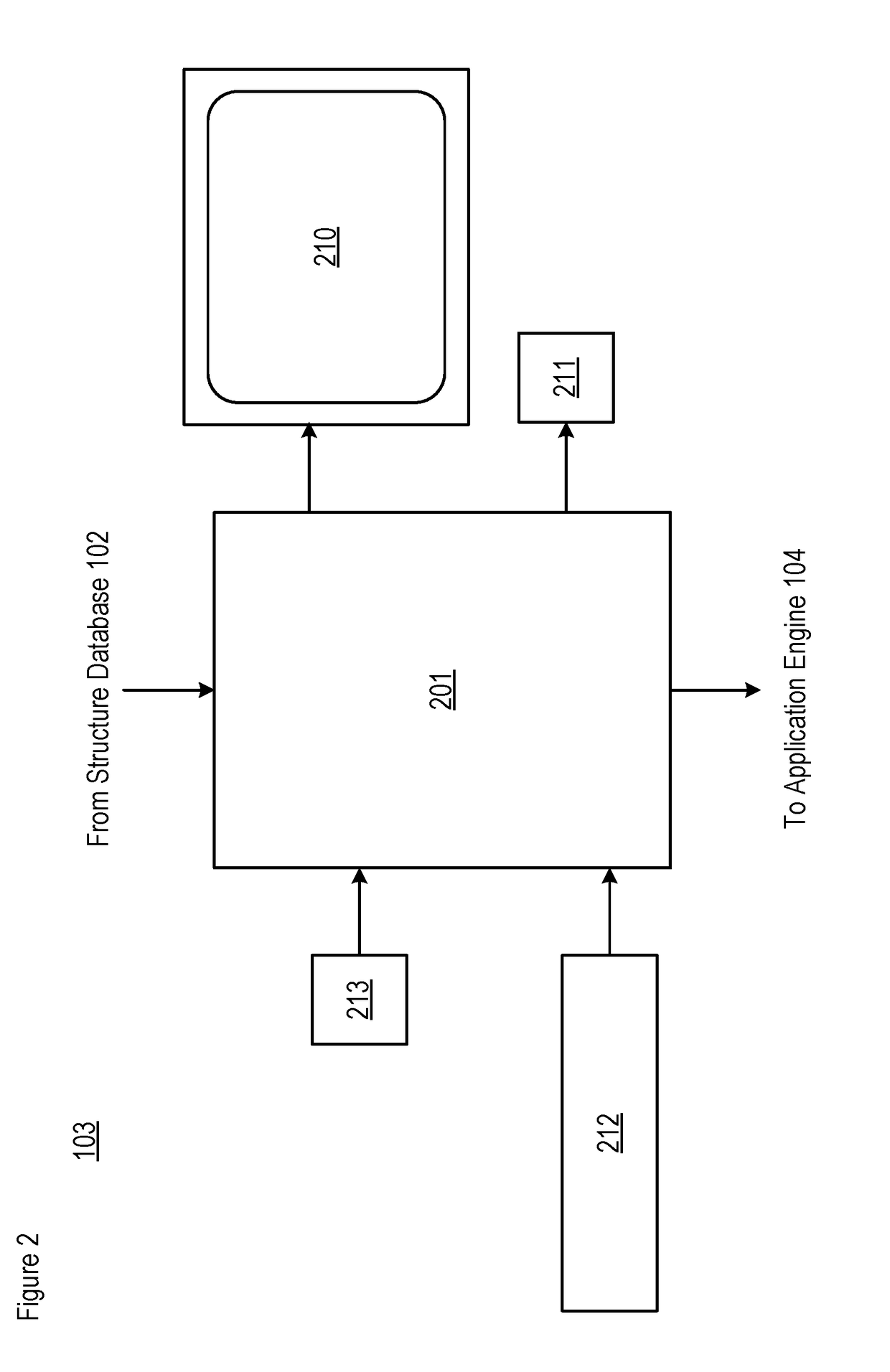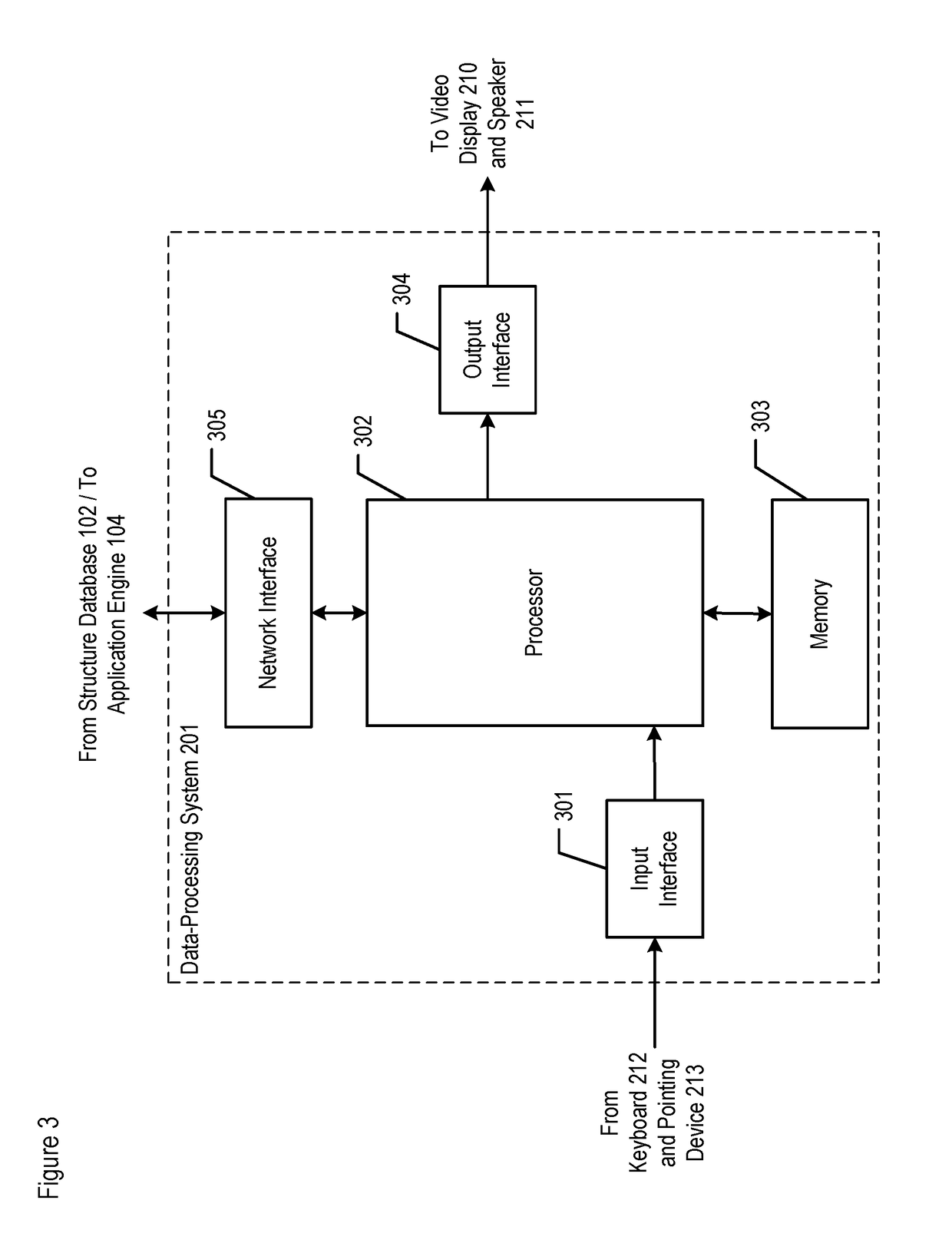Simplification of Data for Representing an Environment, Based on the Heights and Elevations of Polyhedrons that Define Structures Represented in the Data
a technology of environment data and polyhedrons, applied in the field of representation of an environment, can solve the problems of large computer-processing resources and computational intensive operations that are performed on data, and achieve the effects of reducing the number of polyhedrons that need to be considered while using environment data, reducing computation costs, and improving data processing system functioning
- Summary
- Abstract
- Description
- Claims
- Application Information
AI Technical Summary
Benefits of technology
Problems solved by technology
Method used
Image
Examples
Embodiment Construction
[0042]Based on—For the purposes of this specification, the phrase “based on” is defined as “being dependent on” in contrast to “being independent of”. The value of Y is dependent on the value of X when the value of Y is different for two or more values of X. The value of Y is independent of the value of X when the value of Y is the same for all values of X. Being “based on” includes both functions and relations.
[0043]Dataset—For the purposes of this specification, the phrase “dataset” is defined as a collection of data, A dataset can originate from an organized collection of data, such as a database.
[0044]Edge—For the purposes of this specification, the phrase “edge” is defined as a line segment joining two vertices in a polygon or polyhedron.
[0045]Elevation—For the purposes of this specification, the phrase “elevation” is defined as height above a given level (e.g., ground, MSL, etc.). A “start elevation” is defined as the height of the lowest point on a polyhedron, while an “end e...
PUM
 Login to View More
Login to View More Abstract
Description
Claims
Application Information
 Login to View More
Login to View More - R&D
- Intellectual Property
- Life Sciences
- Materials
- Tech Scout
- Unparalleled Data Quality
- Higher Quality Content
- 60% Fewer Hallucinations
Browse by: Latest US Patents, China's latest patents, Technical Efficacy Thesaurus, Application Domain, Technology Topic, Popular Technical Reports.
© 2025 PatSnap. All rights reserved.Legal|Privacy policy|Modern Slavery Act Transparency Statement|Sitemap|About US| Contact US: help@patsnap.com



